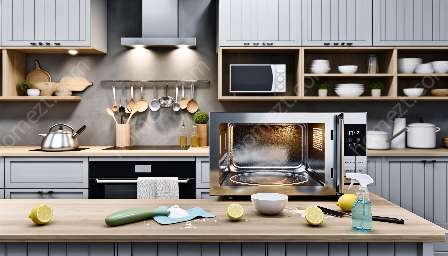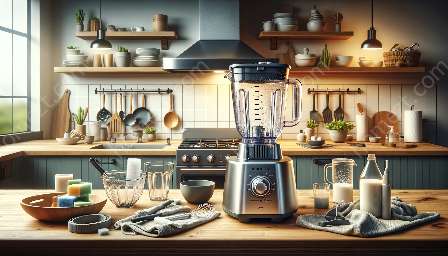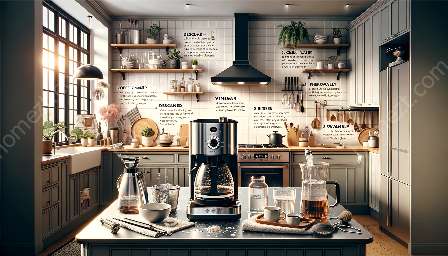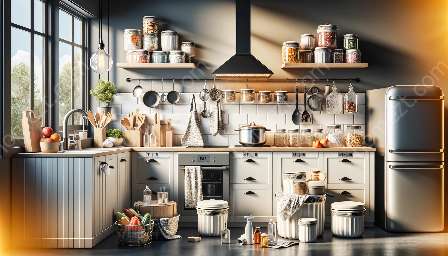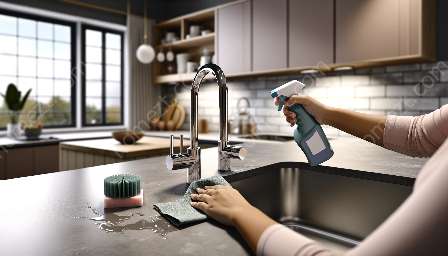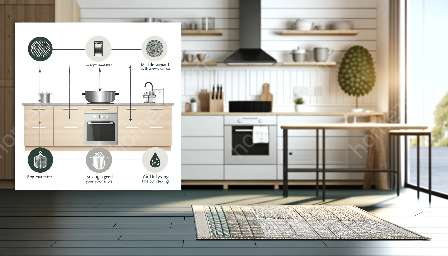Keeping your kitchen utensils clean is essential for maintaining a hygienic and organized kitchen. In this comprehensive guide, we will explore various methods and tips for cleaning different types of kitchen utensils, including cutlery, cookware, and small appliances. You'll also discover how to effectively use natural cleaning solutions and how to prevent cross-contamination in the kitchen.
Cleaning Cutlery
Your cutlery, including knives, forks, and spoons, can accumulate food residue and bacteria if not cleaned properly. To clean your cutlery:
- Start by scraping off any excess food particles using a utensil or your fingers.
- Wash the cutlery with hot, soapy water, using a sponge or dishcloth to scrub away any stubborn residue.
- Rinse the cutlery thoroughly under running water to remove any soap residue.
- Dry the cutlery with a clean dish towel or let them air dry.
Cleaning Cookware
Cookware, such as pots, pans, and baking sheets, can become stained and greasy after cooking. Follow these steps to clean your cookware:
- If the cookware has burnt-on food, soak it in hot, soapy water for a few hours to loosen the residue.
- Scrub the cookware with a non-abrasive sponge or brush, using baking soda or a mild abrasive cleaner for stubborn stains.
- Rinse the cookware thoroughly and dry it with a clean towel.
- For stainless steel cookware, you can use vinegar or lemon juice to remove water spots and restore shine.
Cleaning Small Appliances
Small kitchen appliances, such as blenders, toasters, and coffee makers, also require regular cleaning to prevent the buildup of food and grime. Here's how to clean your small appliances:
- Unplug the appliance and disassemble it as per the manufacturer's instructions.
- Wash removable parts, such as blender blades or coffee carafes, with hot, soapy water. For tougher stains, use a mixture of baking soda and water as a natural cleaning solution.
- Wipe the exterior of the appliance with a damp cloth, ensuring that no moisture enters the electrical components.
- Allow the parts to air dry completely before reassembling the appliance.
Natural Cleaning Solutions
Using natural cleaning solutions, such as vinegar, baking soda, and lemon juice, can be an effective and eco-friendly way to clean your kitchen utensils. Vinegar can help remove water spots and disinfect surfaces, while baking soda can act as a mild abrasive cleaner. Lemon juice is excellent for cutting through grease and adding a fresh scent to your utensils.
Preventing Cross-Contamination
To maintain a hygienic kitchen environment, it's essential to prevent cross-contamination between different food items and utensils. Here are some tips to prevent cross-contamination:
- Use separate cutting boards for raw meats and vegetables to avoid the spread of bacteria.
- Wash your hands frequently, especially after handling raw meat, poultry, or seafood.
- Sanitize surfaces and utensils that come into contact with raw foods, such as countertops and cutting boards.
- Store raw meats and seafood on the bottom shelf of the refrigerator to prevent drips onto other foods.
By following these tips and methods for cleaning and maintaining your kitchen utensils, you can ensure a safe and sanitary cooking environment for you and your family. Keeping your kitchen and dining area clean is not only crucial for food safety but also for creating an inviting and enjoyable space for cooking and dining.




















